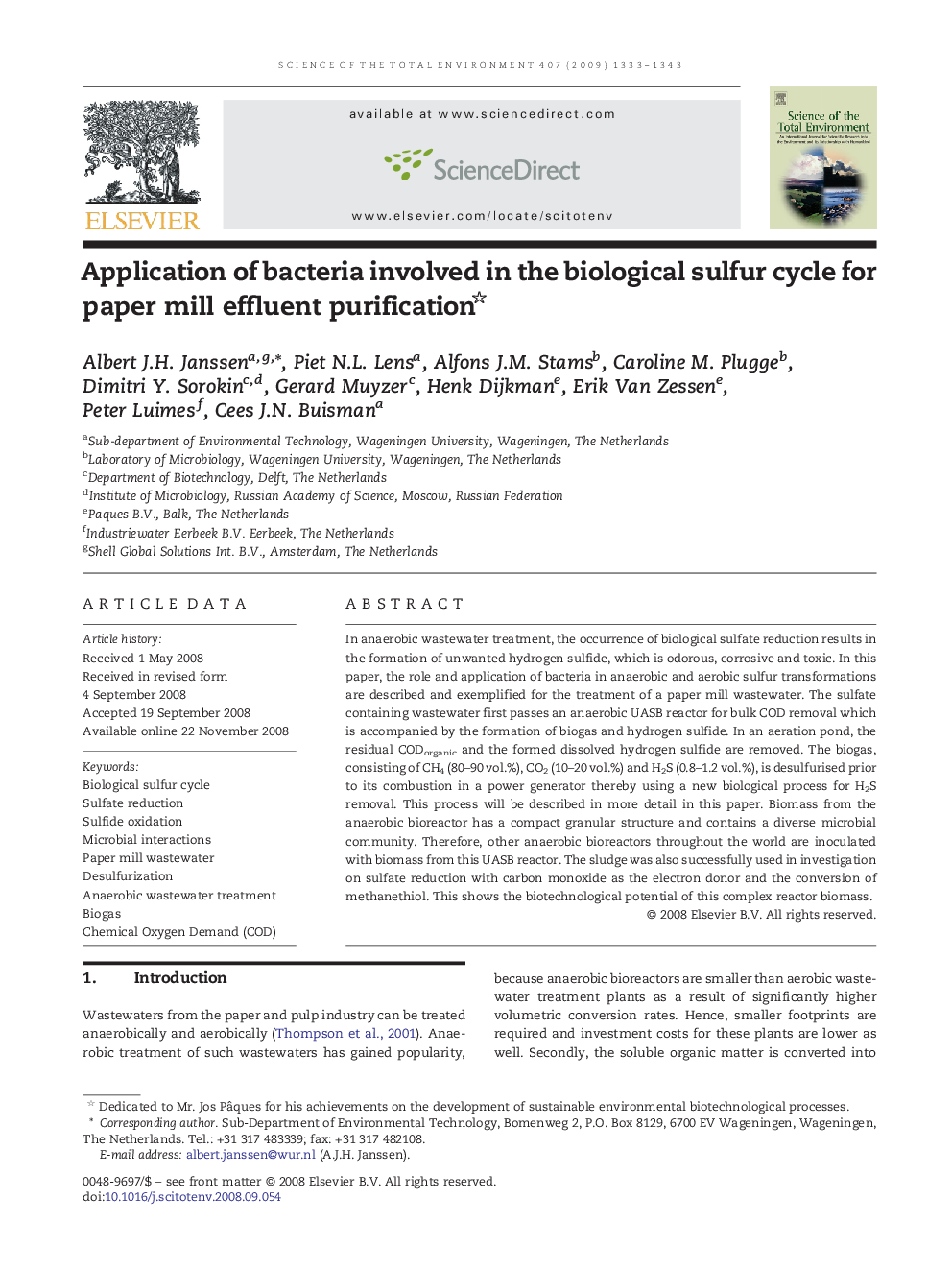| کد مقاله | کد نشریه | سال انتشار | مقاله انگلیسی | نسخه تمام متن |
|---|---|---|---|---|
| 4432414 | 1619906 | 2009 | 11 صفحه PDF | دانلود رایگان |

In anaerobic wastewater treatment, the occurrence of biological sulfate reduction results in the formation of unwanted hydrogen sulfide, which is odorous, corrosive and toxic. In this paper, the role and application of bacteria in anaerobic and aerobic sulfur transformations are described and exemplified for the treatment of a paper mill wastewater. The sulfate containing wastewater first passes an anaerobic UASB reactor for bulk COD removal which is accompanied by the formation of biogas and hydrogen sulfide. In an aeration pond, the residual CODorganic and the formed dissolved hydrogen sulfide are removed. The biogas, consisting of CH4 (80–90 vol.%), CO2 (10–20 vol.%) and H2S (0.8–1.2 vol.%), is desulfurised prior to its combustion in a power generator thereby using a new biological process for H2S removal. This process will be described in more detail in this paper. Biomass from the anaerobic bioreactor has a compact granular structure and contains a diverse microbial community. Therefore, other anaerobic bioreactors throughout the world are inoculated with biomass from this UASB reactor. The sludge was also successfully used in investigation on sulfate reduction with carbon monoxide as the electron donor and the conversion of methanethiol. This shows the biotechnological potential of this complex reactor biomass.
Journal: Science of The Total Environment - Volume 407, Issue 4, 1 February 2009, Pages 1333–1343